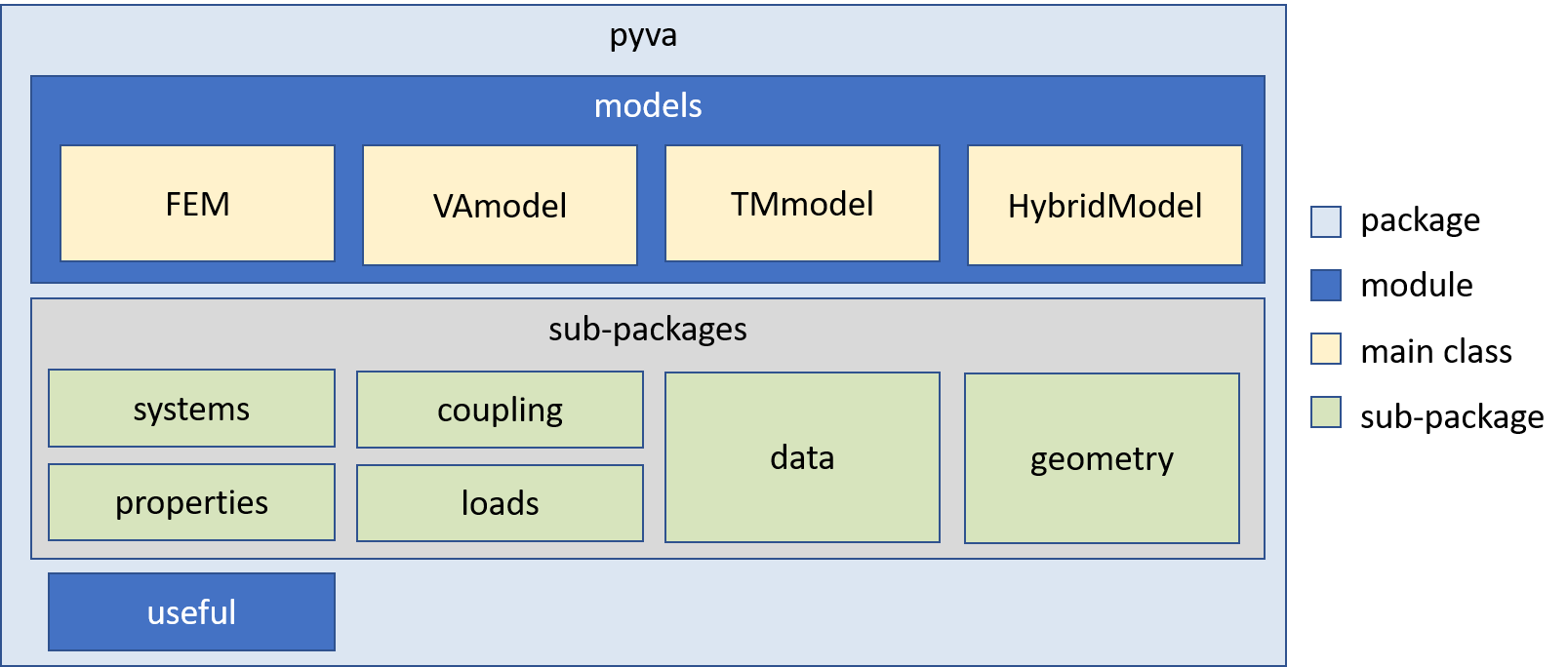About pyva
Vibroacoustic simulation is a challenging and demanding task. Students in this field of acoustics must get used to several methods and tools. A full frequency vibroacoustic simulation requires very different tools ranging from deterministic approaches, for example finite element methods (FEM), to random methods as the statistical energy analysis (SEA) In the mid frequency range deterministic and random approaches must be used simultaneously. This is called the hybrid FEM/SEA-method.
Students (and small acoustic consultancies) usually cannot afford the licence costs of typical vibroacoustic simulation software. Thus, the pyva toolbox aims at providing a software framework to apply all the above mentioned methods in a python environment for free. The idea is to allow students to exercise vibroacoustic simulation using a free software without the need to implement everything from scratch.
Objectives
So what are the main goals of the pyva package? The main goals are …
to establish a data structure that deals with typical data of vibroacoustic simulation as transfer matrices, system matrices, signals, shape function etc.
to implement an API for SEA-methods that can be easily used and extended
to implement an API for hybrid FEM/SEA-methods
to implement an API for acoustic and elastodynamic material models
to implement system descriptions for deterministic and random systems
to provide an open framework to allow further extensions
Modules

Overview of pyva sub-packages and modules
The pyva package has several modules in a hierarchical way.
The main module
The top-level module pyva.models consists of classes that describe
a deterministic, random or hybrid model.
Those are classes are:
Deterministic Finite Element Models
pyva.models.FEMHybrid Models (that may only contain SEA Systems)
pyva.models.HybridModelVibro Acoustic Models
pyva.models.VAmodel
The transfermatrix class is a deterministic model class but with the specific task of multiple and infinite layer simulation.
Transfermatrix Models
pyva.models.TMmodel
Subpackages
The submodules have the following purposes:
To describe and model the dynamics of systems
To populate the database for system properties (materials, properties, contact dynamics)
To deal efficiently with the required system matrices and state vectors
The first task is performed by specific system classes in the modules of pyva.systems subpackage,
the second by the modules of the pyva.properties subpackage and the latter by the
modules of the pyva.data subpackage.